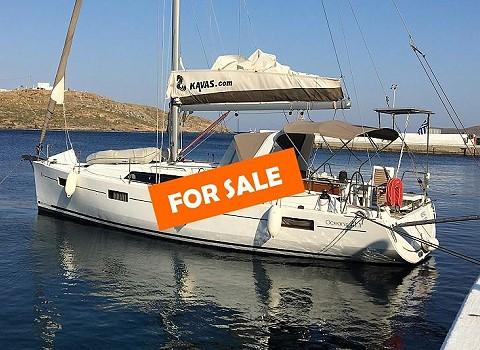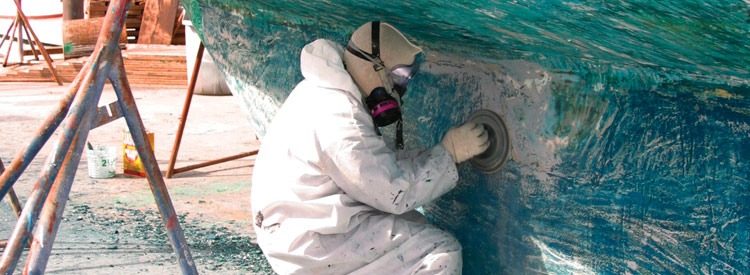Buying your first sailboat
Buying your first sailboat is an exciting prospect but it can be full of pitfalls and disappointments if you venture into it through rose-coloured glasses. You are spending a lot of money on your first purchase and you are going to spend a lot more after it. That is not to say that the experience can’t be a very positive one: just know what you want and what you can afford. Unless you are made of money, those two elements will always mean that you have to make some compromises right at the start of becoming a “yachtie”. Based on my own experience, these are some of the considerations you might light to consider to help you through your purchasing journey…
1. Know what you want!
If you don’t know what you want then you will be 100% successful in purchasing the wrong sailboat. Knowing what you want is based on knowing what you know but more importantly, gaining knowledge about what you don’t know.
So if you are buying your first sailboat then do not aim for the boat you think you want. Aim for a boat that will tell you over time what you want and need. In other words, buy a smaller cheaper “first” sailboat and sail it, then sail it again and then sail it some more… Learn from anything that goes wrong (and it will) and learn how to fix things. After a while, you start to notice that some things on your boat are really good to have but more importantly, you will also start to notice what is missing.

As a rule of thumb, the cost of a sailboat doubles with every 10 feet in length. This applies to everything including the purchase as well as maintenance.
Ask yourself some questions like:
- What are we going to do with our boat?
Are you going to race it, cruise the coast or are you planning for ocean crossings? Knowing what you are going to use the boat for will answer a lot of other questions later such as safety equipment and communications, hull and rig type, hull material etc… - Will I buy new or used?
If you are going to own this boat for 5 years and you have 2 left hands in terms of mechanical skills, then perhaps a new boat will be better for you. If you know how to replace an alternator and water pump and fully understand why your water stopped flowing in your shower then you may be okay with an older boat. Eventually, EVERYTHING on a boat needs to be replaced so be prepared to do the work or pay for tradies. - How big do I need or want my boat to be?
Size does matter and there is a direct correlation between size and comfort. But big also means more expensive. Not just the purchase price but also the maintenance, mooring fees, spare parts, insurance etc… So big is a comfort but also a luxury. - Do I know how to sail and will I be sailing alone or with others?
Some boats are easier to sail than others. If you do not know how to sail then join your local WAGS (Wednesday Afternoon Go Sailing). Almost all yacht clubs run WAGS and it is a great opportunity to crew on different sailboats and gain lots of experience. If you already know your barber hauler from your cunningham, then you may focus your learning on navigation or maintenance. - What are the costs of owning a boat?
There is an old cliche which poses the question: “What are the 2 happiest days in your life?” to which the answer is: “The first is the day you buy your first boat, the second is when you sell it.” This can be very true but only if you rushed into your purchase without knowing (or ignoring) all the facts. Money is a big factor in boat ownership. There is a rule of thumb that suggests that if you have $100,000 available to buy a boat then spend $50,000 on the purchase and the other $50,000 on things you may want or need to add to the boat and for repairing or replacing things that break down within 3 months of the purchase date. There is no such thing as the perfect boat so plan for that indisputable fact.
2. Know what your partner wants
If you are doing this solo then skip this part. If you have a partner that will accompany you on your adventure then read this part twice.
Sailing and living on a boat requires a list of duties and tasks that just need to be done and division of duty is only natural. One person is better at some things than others and in the end, your skills hopefully complement each other. So make sure you involve your partner from the very beginning.
“I bought a boat” should not be the first thing you communicate to your partner in pursuit of a life on the water. It is a big step to make and mutual input into the venture is essential. Your partner may have a very different list of needs and wants so talk little and listen a lot…

It is estimated that as many as 20% of couples break up during their sailing adventure because frequently the woman discovers that sailing is not the sentimental lifestyle of champagne and white beached deserted islands her partner had led her to believe.
3. Do your research.
I use to read books at night when buying a sailboat was no more than a concept and a longterm aspiration. I started to trawl the Internet for “boats for sale”. Almost every night I would turn on my laptop and look at different sailboats. Compare them, evaluate their price, look at features and so on… If there was a brand I didn’t know about, I would research it by looking at the manufacturer’s website and throwing out a question or two on sailing forums to get other sailor’s opinions. My endless pursuit in finding something we liked during the late hours of the night was met with the question “Are you looking at boat porn again?”. Yes, I was and in the end, we had a pretty good idea of what a sailboat with specific features and a certain age would be worth. Time well spent!

Did you know that around 170,000 Australians own a sailboat? Will it be 170,001 soon?
4. Sail or tinker
You may well be super handy with your hands and taking on a “project boat” seems hardly a challenge. “I picked it up for a bargain!” doesn’t really happen very often with boats because what you don’t spend now, you will spend later. However, it is true that for some people it is the journey of building their own boat that is the attraction and for the right person, it is the way to go. It is satisfying and comforting to know every nut and bolt on your boat so when things break, you know how to fix them.
For most, we just want to go sailing. So you need to make an early decision about what you are: a sailor or a tinkerer. It is very common for tinkerers to run out of money or simply run out of puff. Their boat will be added to the boatyard of broken dreams sitting there waiting for the next tinkerer to come along. It is also most likely not any cheaper to tinker for a few years because it seems that the sum of parts on a sailboat is twice the amount of the boat itself: something anyone visiting a chandlery on a regular base can attest to. Add to this haul-out and storage charges and soon you run out of cash with not much to show for it.

As a rule of thumb, the cost of maintaining a sailboat is about 15% of its replacement value per annum.
5. Put together a budget
Unfortunately, no yacht is perfect. You need to “make it yours” with expensive bits and pieces.
Making a yacht “yours” can be rather costly as it is common to confuse those “wants” with “needs”. For example, the boat you are looking at may have navigational electronics that predate wifi and Bluetooth. None of the new modern equipment you want “talks” to the old stuff. This may lead to having to install a new chart plotter, transducers, AIS, radar, radio etc… You may also notice that the battery bank is 5 years old and ready for replacement soon. Will you go lithium or only spent about $2k on AGM batteries? Another thing is that you get caught up in the excitement of all these new gadgets and it is therefore easy to turn a “want” into a “need” by convincing yourself that it is a “safety issue”.

As a rule of thumb, the cost of a sailboat doubles with every 10 feet in length. This applies to everything including the purchase as well as maintenance.
6. Knowing your ongoing costs

The purchase price of a yacht is one thing; maintaining it is another. So knowing what sailboat you want, you need to come up with a realistic annual budget. It is better to underspend on your initial purchase and to be able to afford to keep your boat in good condition compared to having a more expensive boat in need of an engine replacement you can’t afford.
This is a list of estimated costs for our boat:
- Boat Insurance ($3,000 pa)
- Haul-out ($2,000 pa)
- Berthing ($10,000 pa)
- Equipment maintenance and replacement ($5,000 pa)
- Engine maintenance ($3,000 pa)
- Rigging ($10,000 every 10 years)
- Batteries ($2,000 every 5 years)
- Sails ($9,000 every 6 years)
- Boat registration ($500 pa)
- Club Membership Fee ($400 pa)
- Wifi and Internet ($1,000 pa)
- Fuel ($4,000 pa)
- Incidentals ($7,000 pa)
Add this if you are living on your boat and are cruising internationally:
- Sailing permits ($4,000 pa)
- VISA application (1,000 pa)
- Flights home ($3,000 pa)
- Travel insurance ($1,500 pa)
- Satellite subscription ($2,500 pa)
- Weather forecast subscription ($400 pa)
- Boat registration ($1,500 once-off)
Your general living expenses:
- Food ($7,000 pa)
- Clothing ($1,000 pa)
- Entertainment ($5,000 pa)
- Alchohol ($4,000 pa)
- Medical and dental ($1,000 pa)
Naturally, not everyone requires the same because your boat may be smaller or larger, you may be frugal or like your luxuries, you are sailing on weekends or going around the world. So you may be able to save some dollars if you want to do things cheaper. Hence, the above is an example and not meant to set minimum or maximum perimeters. My point is, be realistic and don’t let a romantic notion of carefree island-hopping cloud your judgement when determining and planning your living expenses.
If the article “Buying your first sailboat” was helpful then don’t be afraid to share it on social media. Also, we love to hear from you so leave a comment below about your experiences in purchasing your first boat…
My uncle has been wishing to get himself a sailboat, albeit second-hand, to celebrate his retirement. Thank you for mentioning about boat registration fee, which is compulsory for boat owners every year. I’ll make sure he remembers this information when he makes his purchase later.